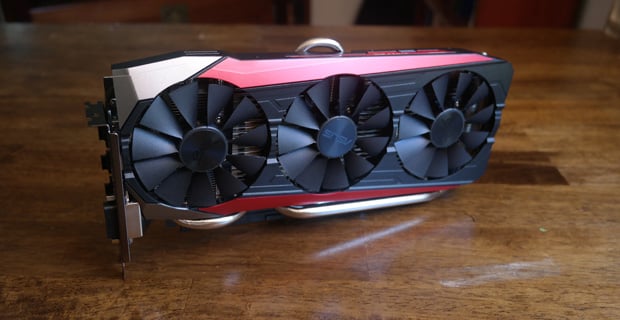ASUS Strix Radeon R9 Fury And The State Of DirectX 12 Performance
ASUS Strix Radeon R9 Fury & Test Setup
DirectX 12 is gaining momentum with both game developers and hardware manufacturers, and as a result, gamers as well. The Windows 10 enabled, low-level API is being adopted in more and more titles, with both legacy and cutting-edge game engines now taking advantage of it. Using an ASUS STRIX Radeon R9 Fury graphics card, along with a few other more mid-range GPUs, we cooked up a performance analysis shootout of sorts. Here, we'll pit DX12 against DX11, using a variety of today's popular game titles that leverage the new API, so we can see what performance looks like and if there are significant, tangible gains. This isn't intended to show which GPU manufacturer or GPU architectures have a performance edge in DX12, but rather simply what DX12 can do versus DX11.
As for the ASUS STRIX Radeon R9 Fury, it remains a formidable contender in the enthusiast graphics space. It features 4GB of HBM memory clocked at 500MHz with a 4096-bit memory interface. Its GPU can reach a speed of 1020MHz in OC mode using an included utility, which is a very slight factory overclock, up from the default 1000MHz. Connectivity options include 3x DisplayPorts, 1x HDMI and 1x DVI port. The card features a custom cooling design from ASUS with a triple fan setup, dual heat-pipes and a rigid backplate. It's not the newest pup in the litter, yet it makes a great test platform for comparing these two APIs due to AMD's strong support for DirectX 12.
Nearly a year ago to the date, we ran a related piece analyzing the game performance of Windows 8 versus Windows 10. Unfortunately, at the time of that writing, there were no DirectX 12 game titles and we were left to compare and contrast performance of the two operating systems using only DX11. Not a great deal has changed since then, though we do now have a handful of DX12 supported games and synthetic benchmarks to work with.
Without mulling over the exhaustive fine points, DirectX 12 will force game developers to learn some new tricks. DirectX 11 inherently has more overhead and doesn’t fully utilize multi-core processors, whereas DirectX 12 is leaner, closer to the metal, and can more efficiently use all available CPU and GPU resources. However, developers will have to put more effort into optimizing games for DX12 as a result, at least in these early stages.
Our test rig for this performance quick-take features an Intel Core i7-6700K, installed in an ASUS ROG Maximus Extreme VIII Z170 motherboard, equipped with a 16GB kit of Corsair Vengeance 2666MHz DDR4 memory. Windows 10 is installed on a 256GB Corsair Neutron Series XT SSD and our game files are installed on a 1TB Corsair Voyager Air.
With that out of the way, let's get to the games and benchmarks...








